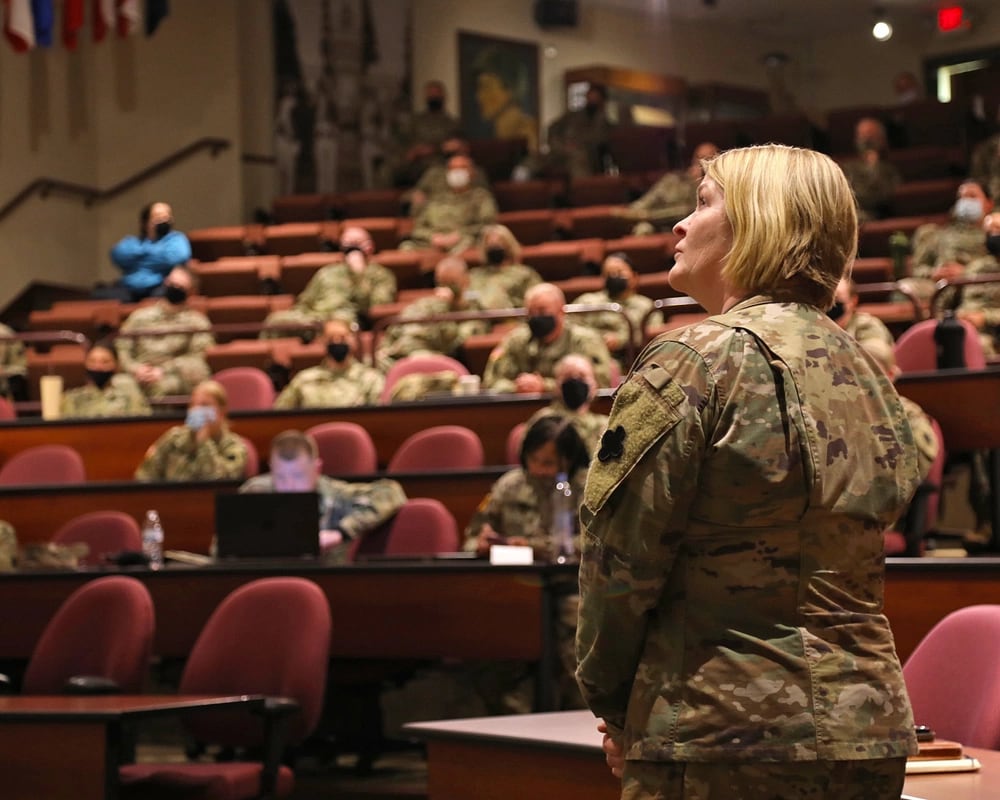It started when Russia invaded Ukraine in February 2022. Social media posts about the conflict traveled faster than journalists could fact check, as manufactured myths like the Ghost of Kyiv, a flying ace credited with downing six Russian planes, were quickly accepted as truth.
Eventually, the anonymous pilot was proven mythic, but it was nevertheless morale-boosting for those on the ground. And while this case of propaganda may have offered a valuable service to Ukrainians, there remains no shortage of false information muddying truth on social media today — notably, information pertaining to Israel’s war with Hamas.
Disinformation, misinformation, and deep fakes can be dangerous for active duty service members who use social media. Still, the Defense Department has not updated its social media policies or put out additional guidance in light of the recent conflict in the Middle East.
Currently, Pentagon policy holds that “DoD civilians and service members must remember their duty to protect DoD information and prevent the unauthorized disclosure of non-public and classified information. Additionally they should be mindful of the power of connected media and refrain from making statements that may appear to represent an official position by the DoD, their Command, or office,” according to DoD spokesperson, Navy Cmdr. Nicole Schwegman.
While some might argue having opinions about foreign wars is different than engaging in, say, political rhetoric, for U.S. service members, there is a fine line, according to William Marcellino, senior behavioral scientist at the RAND Corporation. And in the case of the Israel-Hamas conflict, there are U.S. troops involved and decisions being made that could impact them.
“It’s not simply a foreign issue, your fellow brothers and sisters in arms — especially in the Marine Corps and the Navy and other SOF elements out there — they’re in harm’s way,” Marcellino said. “They’re conducting U.S. foreign policy and defense operations there. So, if you’re trying to chime in and spread information, misinformation, disinformation, to do political advocacy work, that touches on U.S. concerns.”
RELATED

Additionally, while operational security, or OPSEC, remains a high priority, the lines about what service members can and cannot post have become more blurred of late. And it’s increasingly difficult to police the social media activity of troops, Caitlin Chin-Rothmann, a fellow with the Center for Strategic and International Studies and Strategic Technologies Program, told Military Times.
“It is generally difficult for the military to monitor and enforce social media policies across its large civilian and active duty workforce,” Chin-Rothmann said, “and this challenge will only grow in the future.”
Service members must avoid pushing a political agenda, Pentagon guidance notes, even on personal accounts. Whether those rules are being strictly enforced, however, is another matter entirely.
It has become increasingly common in recent years, for instance, for uniformed active duty service members to share political opinions and boost information about international conflicts through social media.
“Misinformation and disinformation presents numerous challenges for the DoD and troops,” Chin-Rothmann added. “Some online conspiracy theories promote extremism or violence, stoke distrust in public health policies, and otherwise seek to undermine democratic societies. Because many DoD employees and active duty service members hold access to sensitive information or other powerful assets, they may be susceptible to outsized harms.”
Current DoD policy defines political activity as one “directed toward the success or failure of a political party, candidate for partisan political office or partisan political group.”
“As we’ve seen with the Air Guardsmen revealing classified documents on Discord, if you’re a digital native, who has been on social media your whole life, that message may not ring,” Marcellino said.
Sarah Sicard is a Senior Editor with Military Times. She previously served as the Digitial Editor of Military Times and the Army Times Editor. Other work can be found at National Defense Magazine, Task & Purpose, and Defense News.





